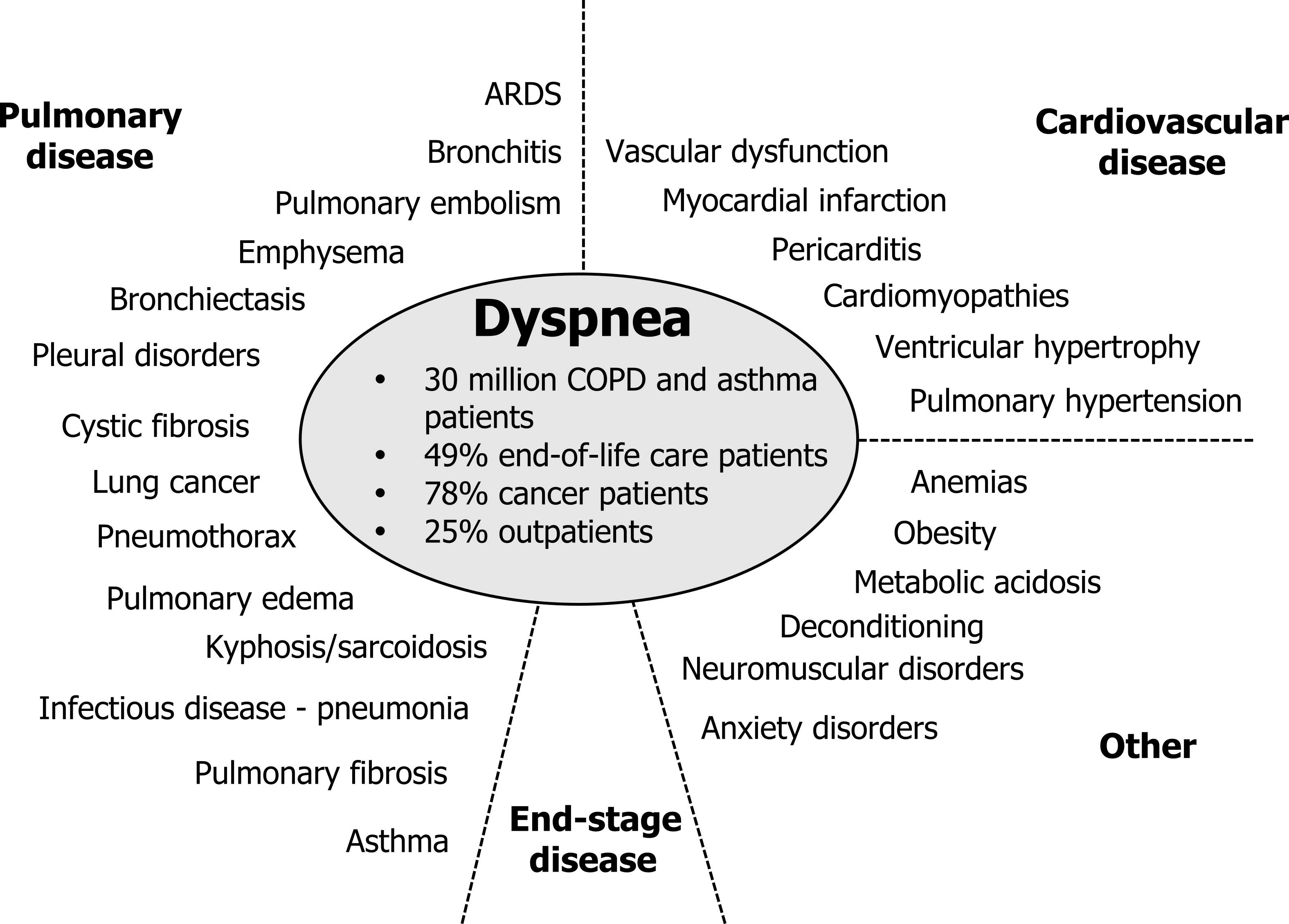Dyspnea (DYSP)

Dyspnea: Definition and Characteristics
What is Dyspnea (DYSP)?
Dyspnea (DYSP) refers to the subjective sensation of breathlessness or difficulty breathing. It is a common symptom in patients with advanced cancers and can significantly impair quality of life. Dyspnea may arise from cancer-related factors, treatment side effects, or unrelated medical conditions.
Characteristics
Mechanism: Dyspnea in cancer patients is multifactorial. Direct causes include airway obstruction by tumors, pleural effusions, pneumonias, pulmonary embolism, respiratory muscle weakness, and nerve paralysis. Indirect causes include anemia, electrolyte imbalances, anxiety, and cachexia. The sensation arises when the respiratory center’s signals do not match the body’s ventilatory demand, due to mechanical, neurological, or chemical disturbances.
Symptoms: Patients report shortness of breath, increased work of breathing, chest tightness, and in severe cases, respiratory distress. Dyspnea may be acute or chronic, intermittent or constant, and worsen with exertion or at rest.
Risk Factors: Risk factors include lung or thoracic cancers, infections, treatment toxicities (chemotherapy, radiation), cardiovascular comorbidities, and pre-existing lung diseases.
Clinical Significance
Dyspnea necessitates thorough evaluation to identify and treat underlying causes. Diagnostic tools include imaging (chest X-ray, CT scans), blood tests (anemia, electrolytes), and pulmonary function assessments. Management focuses on treating reversible causes, symptom control with medications such as opioids and steroids, and supportive therapies including oxygen and breathing techniques.
Key Points
- Dyspnea is breathlessness linked to respiratory, cardiac, oncological, or psychological factors.
- Cancer-related causes include tumor obstruction, infections, and treatment effects.
- Risk increases with thoracic malignancies and co-existing disease.
- Comprehensive assessment and individualized symptom management are critical to improve comfort.
Consult with Our Team of Experts Now!
For assessment and tailored management of dyspnea in cancer and other conditions, consult our pulmonary and oncology specialists for integrated care using Cellular Therapy and Stem Cells .
References:
Keramida K, Tsiouda T, Zarogoulidis P, et al. Dyspnea in Oncological Patients: A Brain Teaser. Medicina (Kaunas). 2023 Feb 2;59(2):231. doi:10.3390/medicina59020231. Available at: https://www.ncbi.nlm.nih.gov/pmc/articles/PMC9947930/















